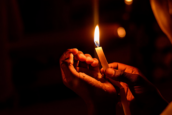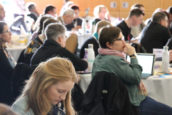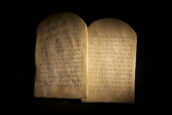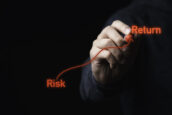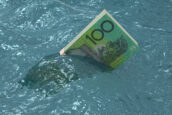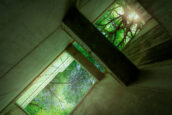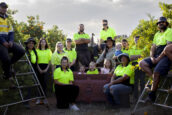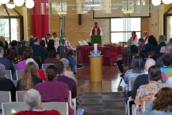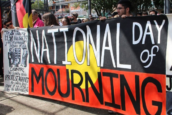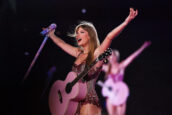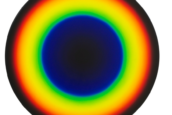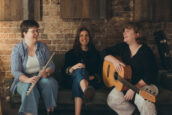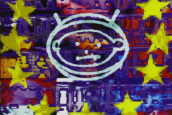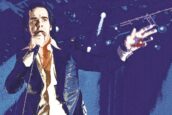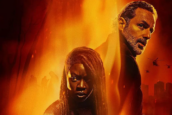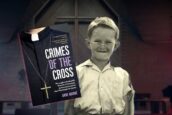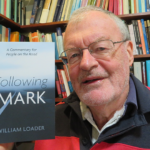
Geordie Williamson’s new book, The Burning Library, makes a passionate plea to restore a neglected bounty of Australian literature.
Geordie Williamson is on a rescue mission.
For the past year he’s been fossicking in second-hand bookshops and library stacks, raiding friends’ bookshelves and trawling for hours on e-bay. He’s been searching for books by certain Australian authors — mainly 20th century writers he believes have been ignored, underestimated or discredited — with the aim of bringing them to light.
His sifting, sorting and reading has been reminiscent of a half decade he spent in London working for antiquarian bookseller Bernard Quaritch, attending to author archives and cataloguing rare books.
The main difference here, however, is that he’s been pondering knotty questions of Ozlit as he wipes off the dust.
How did the works of these fine Australian authors fall out of the story? Why are so many foundational works in our nation’s literary history not taught in our schools and universities? Why is it only recently that Text Publishing and Allen & Unwin have brought some of these classics back into print?
Williamson looks happy if a little jetlagged at home in the Blue Mountains in the week before his first book, The Burning Library, is due for release. Between birdsong and the burbling of his two young children, he talks passionately about the authors and works of Australian fiction he’s attempting to rescue from history’s dustbin.
Fifteen fiction writers feature in The Burning Library. They include Sumner Locke Elliot, Elizabeth Harrower, Christina Stead, Patrick White, Marjorie Barnard and Flora Eldershaw (who wrote together under the name of M. Barnard Eldershaw), David Ireland, Jessica Anderson and Gerald Murnane — to name just a few.
They’re an odd band of eccentrics whose writing, Williamson argues, still pulses with meaning and relevance:
- Olga Masters, for example, is a profound commentator on the deforming effects of poverty and on the deleterious effects of suburban loneliness.
- Descriptions of the hardships faced by ordinary Australians during the Depression found in Marjorie Barnard’s final novel, Tomorrow and Tomorrow and Tomorrow, published in 1947, uncannily prefigure the West’s current crisis.
- Elizabeth Harrower’s The Watchtower is a time and motion study of extreme violence … Its suburban living rooms contain intimations of Auschwitz and its endless skies glower with the threat of nuclear annihilation.
Williamson, who is the chief literary critic for The Australian newspaper and who has received the 2011 Pascal Prize for Criticism, says his book is intended to clear space around each of these writers and to recuperate enthusiasm for their work.
“They are not in print, and that is the fault of publishers; they are not taught at universities, which is the fault of academics; and they are not read, which is the fault of all us,” he says.
His quest to resurrect these neglected writers was prompted, in part, by the shock of discovering that David Ireland had been excluded from the Macquarie Pen Anthology of Australian Literature published in 2009.
“Here is a person who has been the subject of two monographs, has won three Miles Franklin awards — and only Thea Astley and Peter Carey have done that or exceeded it — and who is effectively an inescapable figure from our literary past and he is entirely absent.”
Whatever its causes (and his book’s introduction and our conversation is incisive and eloquent about these) Williamson says “the death of Ozlit” has done a deep disservice to many of our nation’s most accomplished authors and, particularly, to “the great triumvirate of 20th century fiction”: Patrick White, Christina Stead and Randolph Stow.
“These are global writers and belong to world literature,” he says.
But they are not given their due.
The celebration in May this year of 100 years since the birth of Patrick White, Australia’s first Nobel Laureate for literature, spurred republication of his existing works and publication of a lost manuscript, The Hanging Garden.
This is fitting, Williamson says, but he also questions: Where was the major piece about White in world literary organs like The New York Review of Books or The London Review of Books? Why was the one event about Patrick White at the Sydney Writer’s festival earlier this year — a panel Williamson took part in — called “Is Patrick White Anti-Australian?”
“It makes you think,” he says. “Is that how far we’ve come, really, that we can’t even have unalloyed love for these tremendous figures?”
Where to start?
So, where should ordinary readers start if they want to dip into the works of authors in The Burning Library?
“Start at the top with White and Stead”, Williamson says, “[because] between the two of them they produce books of great subtlety and power and emotional force.”
In White, he says, readers will encounter the strong tradition in Ozlit of trying to understand Australia in terms of place.
“That’s White’s constant theme. He’s looking. He’s loving it. He writes his first novel in London out of incredible nostalgia for the place — if not for the narrowness. He’s still agin the narrowness — but as a natural world he adores it.”
In Stead, he says, readers will encounter the Australian travelling into space in other places, plus her concerns are far more social.
“There is a sense with White and Stead that the important questions about what it is to be Australian are posed as well as they could be during the 20th century — and that’s obviously a crucial moment in our cultural formation.
“If you love them, then you are going to love all of the undergrowth as well — figures like Harrower or Barnard Eldershaw (both of whom White admired) or Sumner Locke Elliot.”
Williamson is so convinced of the merit of Australia’s literary triumvirate that he sees White as our Tolstoy, Stead as our Dostoevsky and Stow as our Turgenev — “in that he is not the great novelist like the other two but, rather, the gentler, better person.”
Genius neglected
White’s oeuvre is inexhaustible, says Williamson, and while he was “often thought of a cantankerous old so-and-so” he was also generous to those he respected.
“White and Stead never met. She refused to. I think they felt that the universe would explode if matter and anti-matter ever met. But he helped her from afar. He admired her so much. He thought she was the better writer — and he may well have been right. I think she is the great genius. She is really wild, just crazy!”
Williamson believes it is shameful that we have allowed such a giant of Australian literary history as Stead to wallow in obscurity.
The American literary critic, Randall Jarrell, in his introduction to Stead’s novel, The Man Who Loved Children, lauds her genius. Patrick White said Cotter’s England was the great Australian novel and the Australian critic, Don Anderson, believes Stead’s posthumously published work I’m Dying Laughing is one of the major works of the 20th century.
“Yet, because she never settled anywhere and because she’s difficult and bracing, she’s never been accorded that respect. Think about that: You have a Robbie Burns or a Victor Hugo in your midst and you just ignore them.”
Erasing history
Williamson says one major reason certain authors and texts have been discredited or underestimated is guilt at our nation’s past.
“We are constantly seeking to erase our history because our history begins with a great wound. This prosperous, happy, ordered nation was founded on death and dispossession of others.
“There is a lingering feeling that there’s a crime that’s committed here. We feel it hovering in Patrick White. And Xavier Herbert makes it very explicit at the end of Poor Fellow My Country — and this is much quoted around the place — but the idea is that without proper reparation we are thieves.
“So, who would want to look too closely at the 20th century, which is effectively a century of racial exclusion? Who would wish to look back at a period when the Depression figures very powerfully in people’s ideas?”
Williamson also argues convincingly that we owe a debt to the earlier 20th century Australian writers who created our literary tradition out of nothing.
“They literally had to create the world which later generations came to inhabit as writers and yet we forget they were there.”
Williamson recognises it is not just the work of 20th century Australian authors that is in danger of extinction but reading itself that is under threat. People are time poor, he says, and distracted by mobile devices, which mean they’re responding to work issues day and night. They’re also lured by what’s new and exciting now so that “if it’s not advertised on the back of a bus it just falls out of the imagination”.
Making space for any book is hard, he says, let alone making the argument for specifically Australian books, which is politically problematic anyway. Why bother?
“My family in Orange live a few kilometres as the crow flies from the Cadia mine and it’s one of the largest open cut mines in the country. My theory is that, from a metropolitan perspective, if you were wanting to have free range over the interior of this country, which is filled with such mineral wealth it beggars the imagination, then it is in your interests to be profoundly indifferent to place. The less we know about those places outside our urban spaces — and we are an incredibly urban culture — the less we care if anyone seeks to exploit, despoil or to basically take.
“So what are the reasons for bothering to read these books? It’s a way of saying, ‘I cannot know all places but it behoves me as a citizen to know something of the country beyond my immediate doorstep. And that’s why there is still something urgent about non-urban narratives. Many people will say that’s conservative — but I think it’s a fairly radical proposition to be aware of that part of the world.”
White came first
It was as a teenager entering “those serious reading years” that Williamson first read and liked Patrick White — but thought of him as Australia’s only good writer. His reading interests back then were focused elsewhere on American, British and European writers in translation — anything, really, that wasn’t Australian.
His attitude shifted while he was living in the UK after he dropped in to a little bookshop near the Co-op in Lyme Regis and found a copy of The Cardboard Crown by Martin Boyd.
“I took it up to the undercliff — which is this weird geological formation formed about a hundred years ago when the ground just slipped down about a hundred feet towards the bay — and it is very beautiful. I read the first 50 pages and thought, ‘Perhaps I’ve been missing something.’ I’m always slow to come around to these things! So I started reading Australian literature in the same way that Australians listen to Paul Kelly late at night in hotel rooms from Hanoi to Uzbekistan and it was such a lovely thing. I realised I had very much missed out.”
A few years ago, when Williamson started reviewing more seriously and became the chief literary critic for The Australian, he realised he had a pulpit and he should use it to celebrate what was worthwhile in world and Australian literature.
From this vantage point he gained a sense of what publishers and academia were doing in relation to Australian literature and began to see how it was failing to register the full story; there were gaps and elisions.
“This book is really about the literature of the gaps … like liner notes to lost recordings.”
Williamson also ponders how his generation, and those who come after, will find their bearings if the foundational texts of our nation’s history are not there to guide them as they assume positions of power and responsibility.
It is at this point, he says, where the act of reading — which seems so marginal to our daily life — is actually crucial to cultural formation and an ongoing project “to an intelligent, ongoing discussion that takes place from all possible channels between thoughtful people about ‘who it is we are’, and ‘what it is we are doing’ and ‘where it is we are going’.
“The authors in my book are enormously helpful in having an understanding of that larger picture.”
The Burning Library, is therefore not about a disaster, Williamson assures us. It is not about the book dying or about the death of reading. It is about books from our literary history that are still on fire and alive with being. Books that can make a reader’s Geiger counter tick. Books with a long and luminous fuse.
Marjorie Lewis-Jones
The Burning Library is published by Text Publishing, 2012, $32.99











